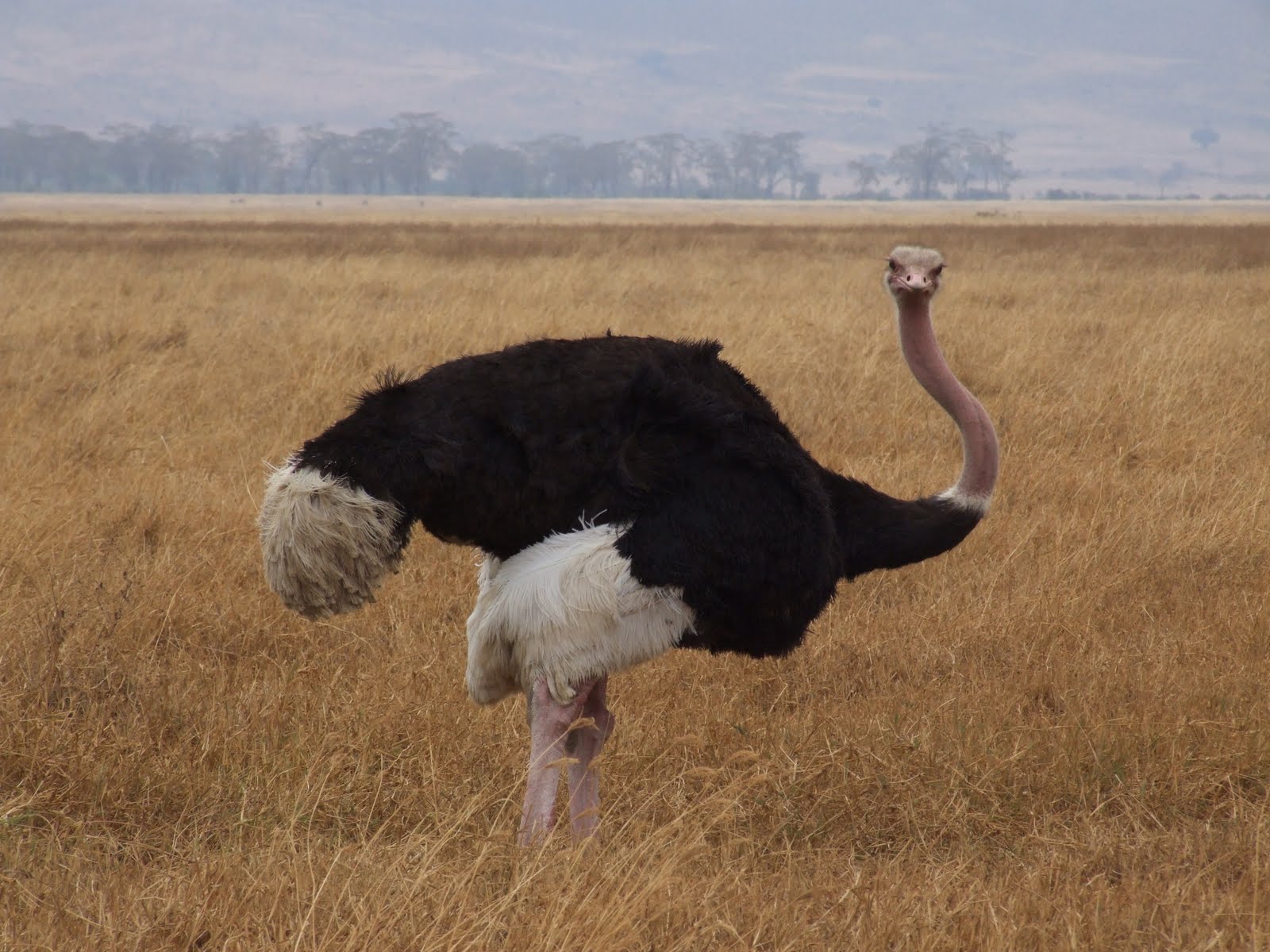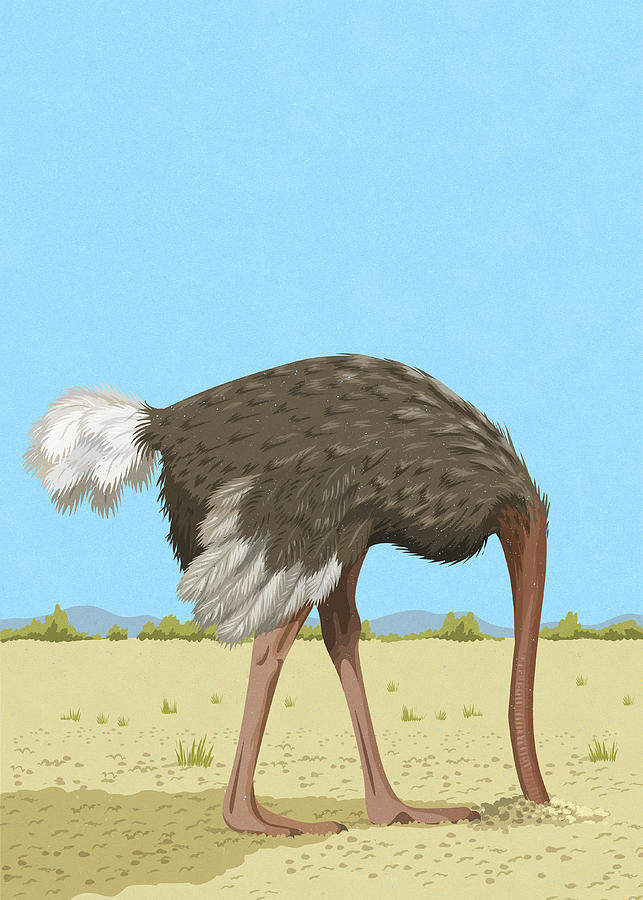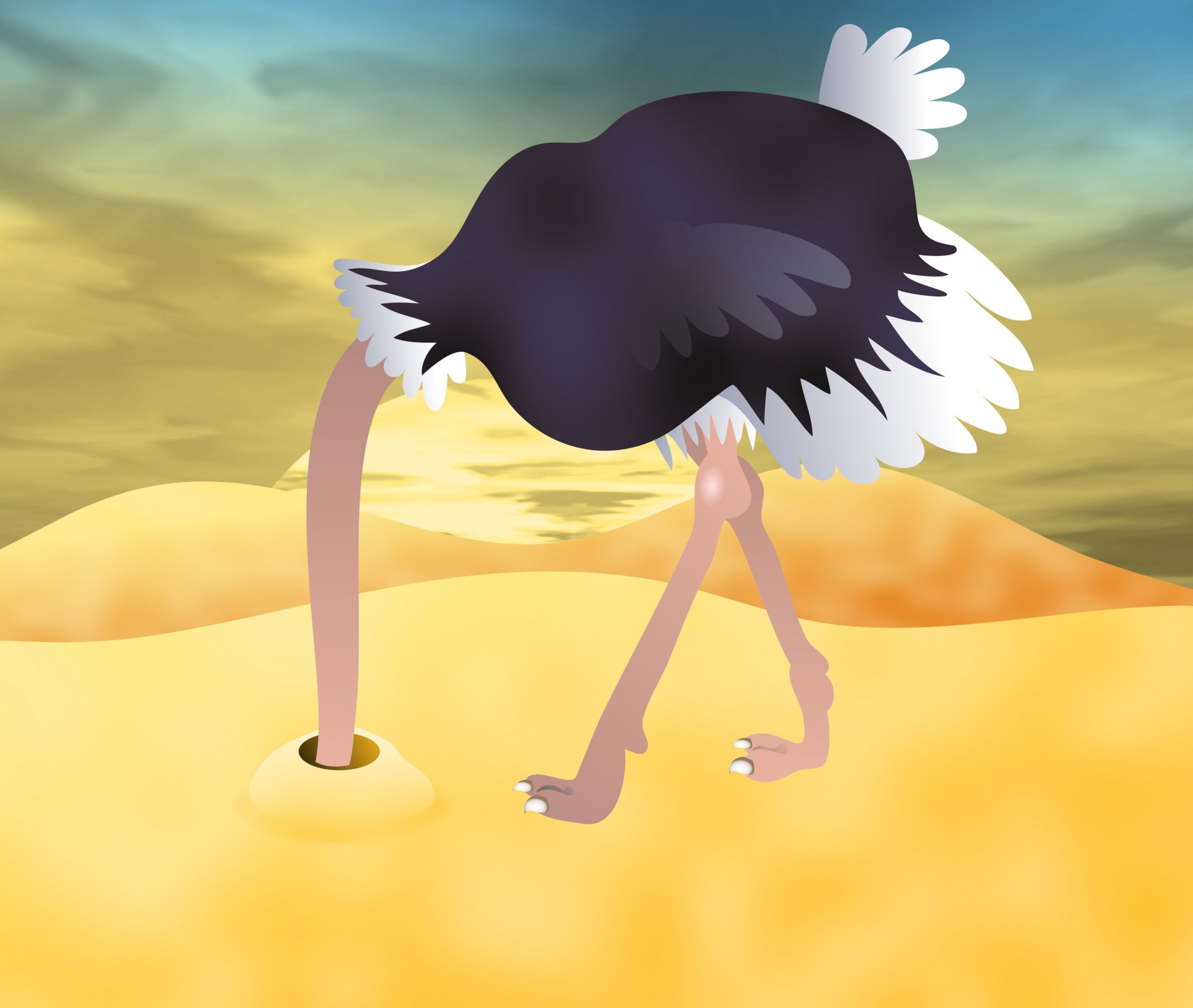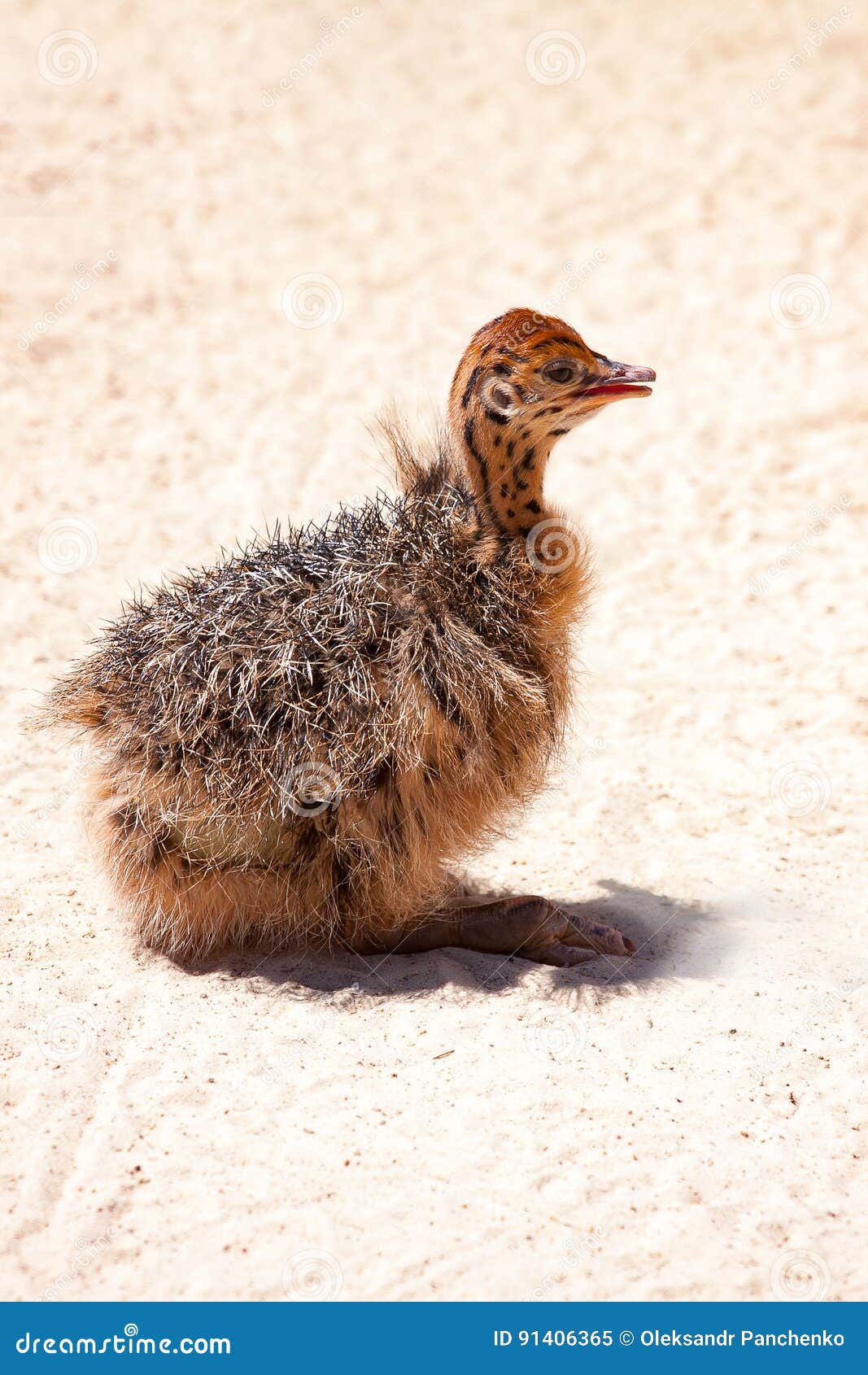Watching the Sun Bake Ostrich A Bird With Its Head Out of the Sand
Ostriches are large flightless birds. They are the heaviest and largest living birds, with adult common ostriches weighing anywhere between 63.5-145 kilograms and laying the largest eggs of any living land animal. With the ability to run at 70 km/h (43.5 mph), they are the fastest birds on land. They are farmed worldwide, with significant industries in the Philippines and in Namibia.

The Ostrich has its Head in the Sand Is it Scared or in Denial? PBI
Ostriches can kick with a force of 140 kilograms per square centimetre—a force capable of killing a lion with a single blow. Ostriches are big, fierce and not afraid to take a stand against predators—a far cry from the unjust reputation for being cowardly and burying their heads in the sand. If you ask me, we should all aspire to be so.

Ostrich Head In Sand High Resolution Stock Photography and Images Alamy
Ostriches have thick, muscular thighs and legs, with two-toed feet ending with a long, sharp claw on each toe. They have big eyes—about 2 inches (5 centimeters) wide, which is the largest of any bird—and fine eyelashes that help protect their eyes from dust and sand. Ostriches have large wings, but they do not use them to fly.

Islam is at War with America But Does America Understand that She is at War with Islam
Contrary to popular belief, due to the idiom, Ostriches do not bury their heads in the sand. This is, in fact, a myth. When it comes to defense, Ostriches can be pretty ferocious birds, who aren't afraid to throw their weight around. Ostriches can be exceptionally tall at over 2.8m (9ft) and very heavy, weighing up to 150kg (330lb) in the case.

Ostrich Pictures, Images and Stock Photos iStock
Ostriches lack teeth, and their digestive system relies on mechanical grinding to break down food. By ingesting small stones, sand, and pebbles, known as grit, ostriches use them as gastroliths. These gastroliths help to grind and crush the food they consume in their muscular gizzard, which is a specialized part of their digestive system.

Ostrich Animal Wildlife
This theory is a myth for two significant reasons: First and foremost, any ostrich that buried its head in the sand to try and evade predators would be sure to have its genes removed from the gene pool pretty quickly! Even if there were no predators around, an ostrich with its head buried in the sand wouldn't be able to breathe.

Resolving the Ostrich Head in Sand Phenomenon OddFeed
A. Ostriches in the Face of Danger: What They Actually Do. When it comes to the behavior of ostriches, one of the most persistent myths is the belief that these flightless birds bury their heads in the sand when faced with danger.However, this notion couldn't be further from the truth. Ostriches have developed their own unique strategies to deal with potential threats in their environment.

Bury Your Head In The Sand Horizontal View Of A Female Ostrich With Its Head In The Sand High
Ostriches bury their heads in the sand when they're scared or threatened. They think they are safe if they can't see the danger. That's a nice fairytale. Ostriches don't live that way.

Ostrich hid its head in the sand pop art Vector Image
Emus and ostriches look similar, but they're very different. Ostriches have two toes and can run up to 40 mph. Emus have three toes and can only run up to 30 mph. Ostriches can also grow up to double the weight of an emu at 300 lbs. But perhaps the biggest difference is where they're native to.

Ostriches Head In Sand Myth
Ostriches don't bury their heads in the sand and imagine that they're successfully hidden. That's just a myth. In reality, ostriches stick their heads in the ground to dig a shallow hole, where they can subsequently make their nests. Struthio camelus - the Sparrow camel. That is what Carl Linnaeus, the man famed for being the father of.

Ostrichheadinsand Mostons
Ostriches also swallow sand, pebbles, and small stones that help grind up food in the gizzard. Since they eat a lot of plants, ostriches do not need to drink water. However, they may drink water.

Ostrich With Head In The Sand Photograph by Ikon Ikon Images Fine Art America
Contrary to popular belief, ostriches do not bury their heads in the sand. The old saw probably originates with one of the bird's defensive behaviors. At the approach of trouble, ostriches will.

Get your head out of the sand! Ostriches are actually pretty amazing. The Wild Life
Ostriches dig shallow holes in the sand to serve as nests for their eggs. The ostrich will use its beak several times a day to turn the eggs in the nest, creating the illusion of burying its head in the sand. Explore More Articles. Truth or Tail: Elephants have good memories.

Ostrich Clip Art Free Stock Photo Public Domain Pictures
The myth that an ostrich will stick its head in the sand, in an effort to hide, may have begun with that great Roman thinker, Pliny the Elder (23-79AD). His real name was Gaius Plinius Secundus.

Do Ostriches Really Hide Their Heads in the Sand? YouTube
Because ostriches live in a semi-arid habitat, sand and dust storms are common and can cause damage to animals' vision and, sometimes, respiratory systems. The ostrich's eyelashes can help.

Small ostrich on sand stock image. Image of chick, environment 91406365
From a distance, an ostrich leaning into a hole to turn an egg could easily look like it's burying its head in the sand! This myth could also have arisen from a couple of other ostrich behaviors. For example, when ostriches eat plants along the ground, they could easily look like they've buried their heads in the sand, especially from a distance.